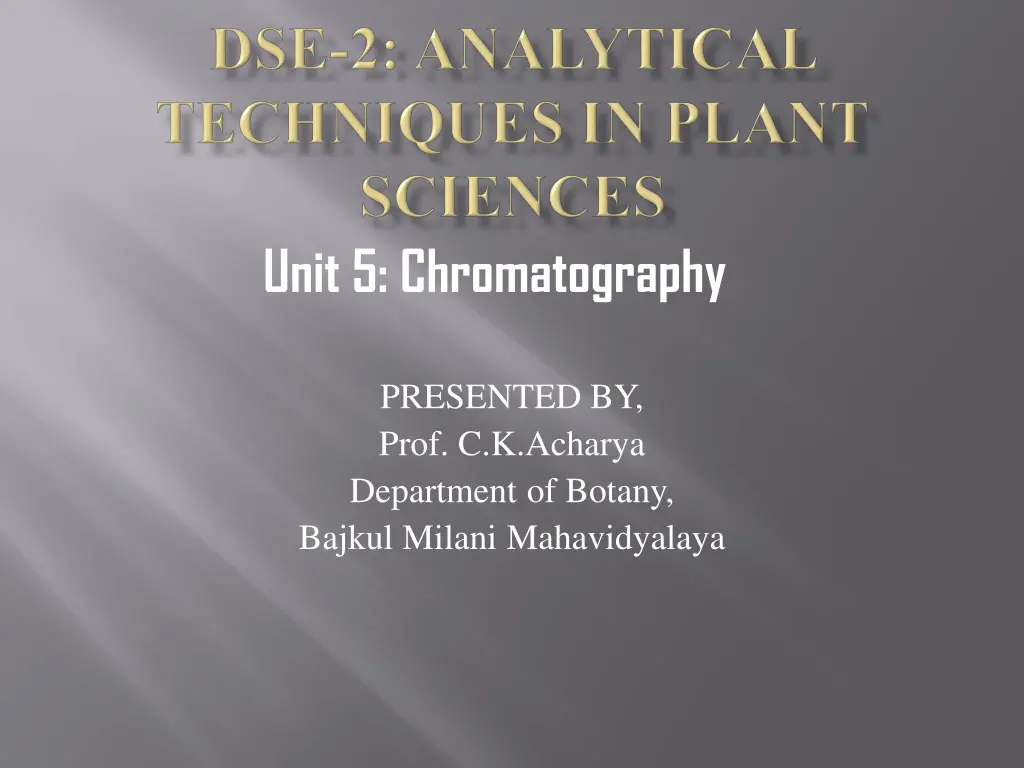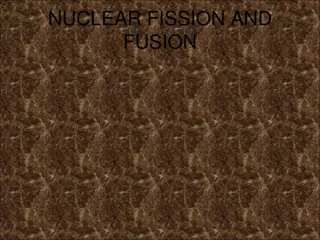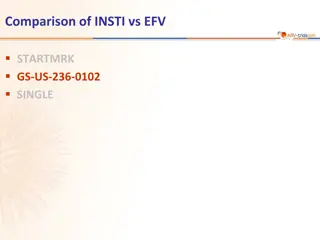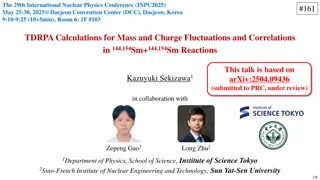
Understanding Paper Chromatography: Principles, Procedure, and Applications
Paper Chromatography is a cost-effective method used for separating chemical substances based on their migration rates. This article explains the principles involved, the step-by-step procedure, and various applications of Paper Chromatography in different fields like pharmaceuticals, cosmetics, and biochemistry. Explore this analytical tool that helps in detecting contaminants, determining purity, and studying reaction mixtures effectively.
Download Presentation

Please find below an Image/Link to download the presentation.
The content on the website is provided AS IS for your information and personal use only. It may not be sold, licensed, or shared on other websites without obtaining consent from the author. If you encounter any issues during the download, it is possible that the publisher has removed the file from their server.
You are allowed to download the files provided on this website for personal or commercial use, subject to the condition that they are used lawfully. All files are the property of their respective owners.
The content on the website is provided AS IS for your information and personal use only. It may not be sold, licensed, or shared on other websites without obtaining consent from the author.
E N D
Presentation Transcript
Unit 5: Chromatography PRESENTED BY, Prof. C.K.Acharya Department of Botany, Bajkul Milani Mahavidyalaya
What Is Paper Chromatography? Chromatography paper sheets or strips as the adsorbent being the stationary phase through which a solution is made to pass is called paper chromatography. It is an inexpensive method of separating dissolved chemical substances by their different migration rates across the sheets of paper. It is a powerful analytical tool that uses very small quantities chromatography was discovered by Synge and Martin in the year 1943. technique that uses of material. Paper
Principle involved The chromatography or adsorption chromatography. Partition chromatography because the substances are partitioned or distributed between liquid phases. The two phases are water held in pores of the filter paper and the other phase is a mobile phase which passes through the paper. When the mobile phase moves, the separation of the mixture takes place. The compounds in the mixture separate themselves based on the differences in their affinity towards stationary and mobile phase solvents under the capillary action of pores in the paper. Adsorption chromatography between solid and liquid phases, wherein the solid surface of the paper is the stationary phase and the liquid phase is the mobile phase. principle can be partition
Paper Chromatography Procedure Below we have explained the procedure to conduct Paper Chromatography Experiment for easy understanding of students. Selecting a suitable type of development: It is decided based on the complexity of the solvent, paper, mixture, etc. Usually ascending type or radial paper chromatography is used as they are easy to perform. Also, it is easy to handle, the chromatogram obtained is faster and the process is less time-consuming. Selecting a suitable filter paper: Selection of filter paper is done based on the size of the pores and the sample quality. Prepare the sample: Sample preparation includes the dissolution of the sample in a suitable solvent (inert with the sample under analysis) used in making the mobile phase. Spot the sample on the paper: Samples should be spotted at a proper position on the paper by using a capillary tube. Chromatogram development: Chromatogram development is spotted by immersing the paper in the mobile phase. Due to the capillary action of paper, the mobile phase moves over the sample on the paper. Paper drying and compound detection: Once the chromatogram is developed, the paper is dried using an air drier. Also, detecting solution can be sprayed on the chromatogram developed paper and dried to identify the sample chromatogram 1. 2. 3. 4. 5. 6.
Applications There are various applications of paper chromatography. Some of the uses of Paper Chromatography in different fields are discussed below: To study the process of fermentation and ripening. To check the purity of pharmaceuticals. To inspect cosmetics. To detect the adulterants. To detect the contaminants in drinks and foods. To examine the reaction mixtures in biochemical laboratories. To determine dopes and drugs in humans and animals.
















